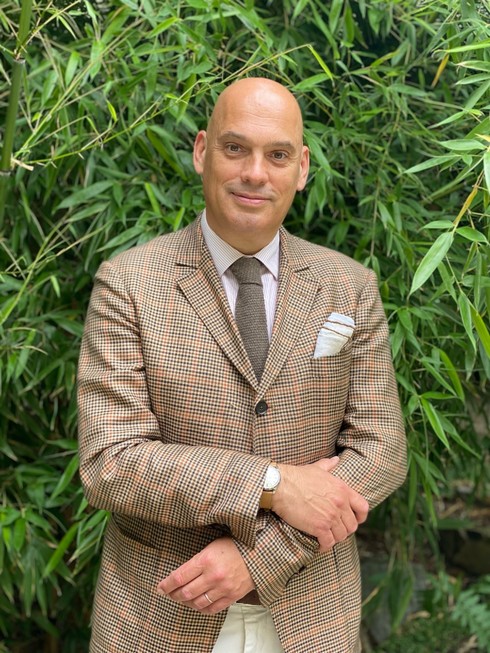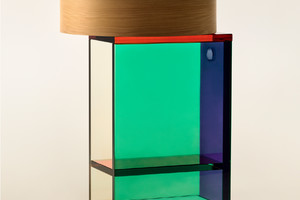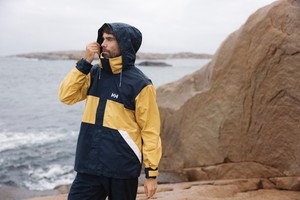A Conversation with Frédéric Bondoux: Steering Grand Seiko's European Expansion and Balancing Tradition with Innovation
Written by Jahwanna BerglundAs the CEO of Grand Seiko in Europe, Frédéric Bondoux has played a pivotal role in expanding the brand’s presence across the continent. With a background in luxury watches and extensive experience managing international markets, Bondoux brings a unique perspective to one of Japan’s most prestigious watchmakers. In this interview with Odalisque Magazine, he reflects on his journey to Grand Seiko, shares his vision for the brand's future, and discusses how the company balances tradition with innovation while navigating an increasingly competitive luxury watch market.
Can you share some highlights of your career journey and what led you to become the CEO of Grand Seiko?
FB: I studied business administration in Lyon, France, and began my career with Omega in Switzerland, managing a part of the Asian market. After several years, I returned to France to lead Omega's French affiliate, where I stayed for 15 years. Later, I transitioned to L’Ochy, and through an interesting twist of fate, a former colleague who had joined Grand Seiko in the U.S. reached out to me. Grand Seiko was looking for someone to establish its European business, and given my experience with Japanese management, it was a natural fit.
Can you share your vision for Grand Seiko over the next five to ten years? What key initiatives are you focusing on to achieve this vision?
FB: Our focus is on positioning Grand Seiko as a brand that resonates with the new generation of luxury consumers. While immediate sales growth is important, the long-term goal in Europe is to build a lasting brand identity that appeals to younger customers. At 18 or 20, people are full of dreams, and we want Grand Seiko to be a brand they aspire to own when they can turn those dreams into reality.
To achieve this, our primary focus is on the quality of the product. You can have the strongest marketing and campaigns, but if the product doesn’t live up to expectations, success will be short-lived. The lasting emotional connection that our products create with customers is key to our vision for the future.
What has been the most challenging aspect of leading Grand Seiko, and what achievement are you most proud of during your time?
FB: I oversee Grand Seiko's operations across Europe, managing 20 territories with 16 different languages, 15 currencies, and nearly 20 local regulations. It's a complex environment with 110 high-end product sales, which presents unique challenges.
The most important thing, however, is that success is impossible without a strong team. Building something meaningful starts with hiring the right people. To succeed, you need to bring in individuals who excel in their fields, often better than yourself. If you surround yourself with talented and brilliant people, you’ll succeed. That’s the foundation I’m most proud of establishing.
Grand Seiko is known for its Spring Drive technology. Are there any upcoming innovations or enhancements in this area that you can share with us?
FB: Yes, Spring Drive technology is truly unique. It took over 24 years to develop into the final product, with more than 600 patents and around 2,000 prototypes. The project began in 1974, and the first prototype was completed in 1988.
Spring Drive is special—it’s a hybrid movement that doesn’t quite fit into traditional categories like quartz or mechanical. It’s something entirely different, and as we continue to innovate, Spring Drive will remain a key focus of our product development. While I can’t share specifics on what or when, new movements and features are definitely in the works.
What do you see as the most significant trends in the luxury watch industry today, and how is Grand Seiko positioned to capitalize on these trends?
FB: The luxury watch industry has evolved to where many brands, while excellent in their craftsmanship, have become more symbols of social status than purely timepieces. Their strong heritage and prestige have contributed to this perception.
However, I believe a growing trend will be the rise of niche brands that focus more on the true art of watchmaking. This shift won’t replace the existing landscape but will add a new layer of appreciation for authentic craftsmanship. In this space, Grand Seiko is well-positioned to thrive. With our dedication to precision, innovation, and craftsmanship, we have a strong voice and a great opportunity to capture the attention of these discerning consumers.
How does Grand Seiko balance the fine line between innovation and preserving traditional watchmaking techniques?
FB: It's quite simple—we embrace a harmonious blend of modernity and tradition. Our foundation is deeply rooted in Japanese culture and heritage, where the pursuit of excellence drives everything we do. This commitment to being the best pushes us to invest heavily in research and development, which serves as our gateway to modernity.
For example, our recently launched movements, such as the UAB movement and the new Spring Drive, reflect this balance. We've also introduced the Evolution 9 collection, designed specifically to engage younger generations. In this way, we create a seamless link between our historical roots and the future, marrying tradition with innovation.
How do you see technological advancements, such as smartwatches, impacting the traditional watch industry, and what is Grand Seiko’s strategy in this context?
FB: It's clear that we need to capture more wrist real estate, so to speak. However, smartwatches present an opportunity rather than a threat, especially because they target younger consumers. Once people become accustomed to wearing something on their wrist, they may eventually seek out something different, like a luxury timepiece. When that time comes, Grand Seiko is perfectly positioned to meet their needs with our craftsmanship and timeless appeal.
How do you see the Grand Seiko brand evolving in the global luxury watch market, especially in the context of increasing competition and changing consumer preferences?
FB: Currently, there isn't a truly global Japanese luxury brand—most are European, especially French, Italian, and English. Grand Seiko has a unique opportunity to fill that space, while also preserving the craftsmanship and “savoir-faire” of our talented artisans. Many traditional crafts are fading because there’s no one to carry on the legacy. We aim to preserve and showcase these exceptional skills, like our dial makers who create stunning designs inspired by nature—each one truly unique.
With careful and modest effort, I believe Grand Seiko could one day become at the top as one of the global luxury brands from Japan. Our team in Europe is dedicated to contributing to this vision.
I recall when we opened our boutique in Place Vendôme, Paris, just after the first lockdown. People were cautious, but the demand was clear. That day, a young man from Dubai, working in finance, visited the store. Though he owned other luxury watches—Rolex, Jaeger-LeCoultre—he didn’t have a Grand Seiko. After trying one on, I told him, “If you buy this, you’ll be our first customer at this boutique.” He did, and now each time he comes to Paris, he proudly tells his friends about being the first Grand Seiko customer in Place Vendôme. Moments like these mark the beginning of our journey toward becoming a global luxury name.
In Stockholm, Sweden Grand Seiko is represented at Nymans Ur 1851 and Krons Ur.














